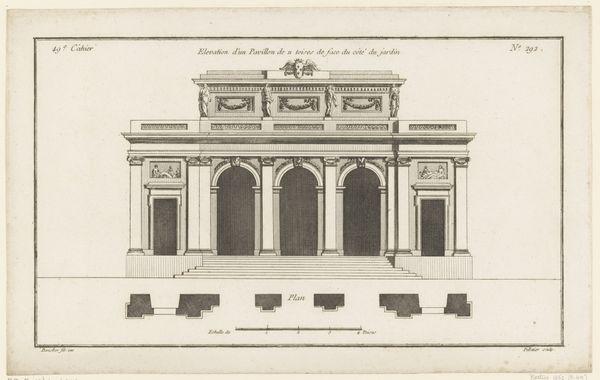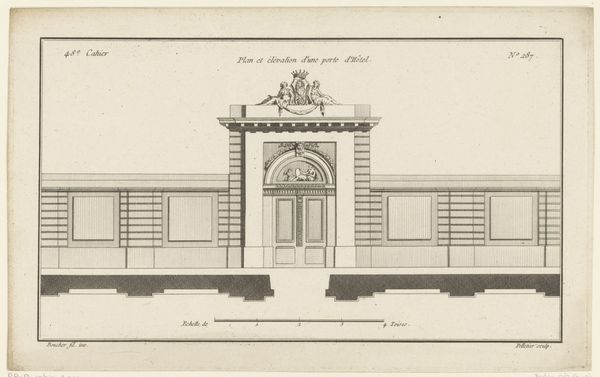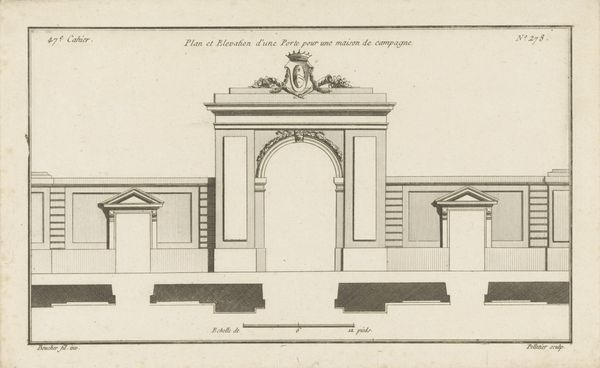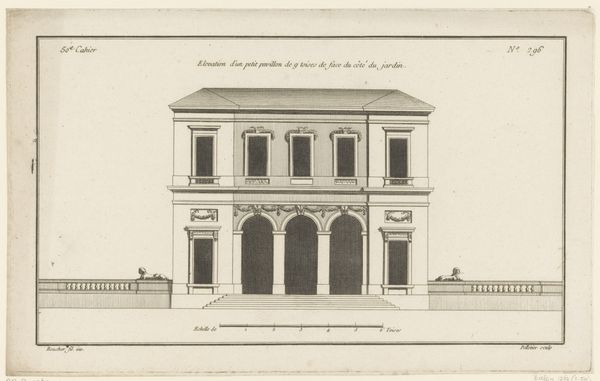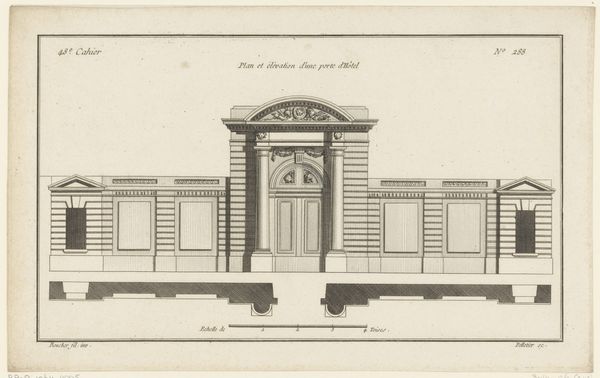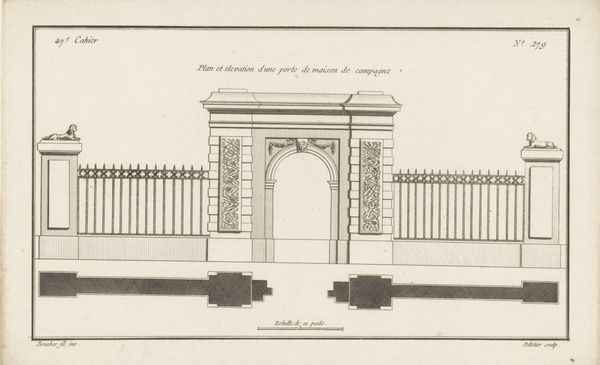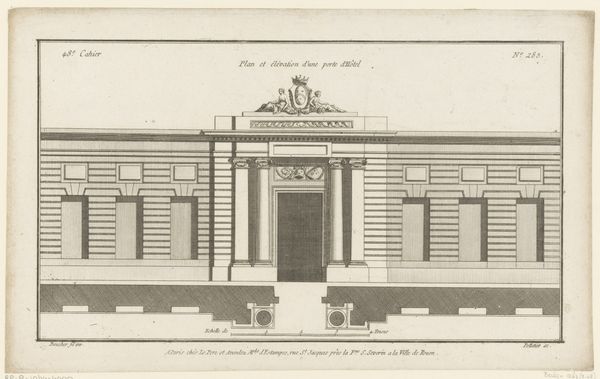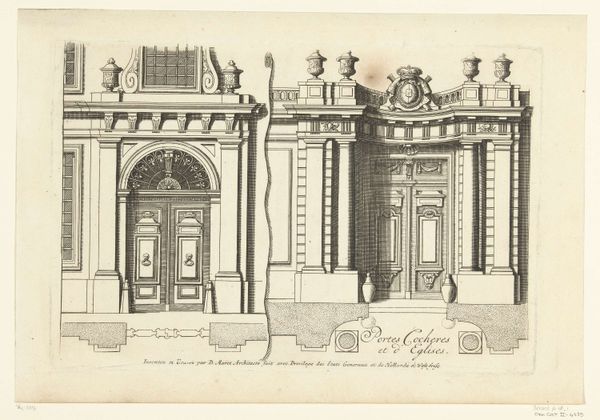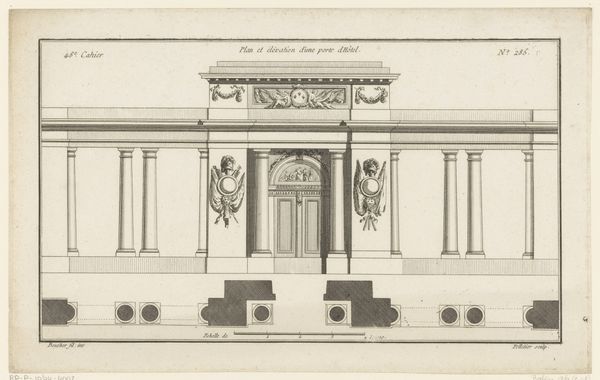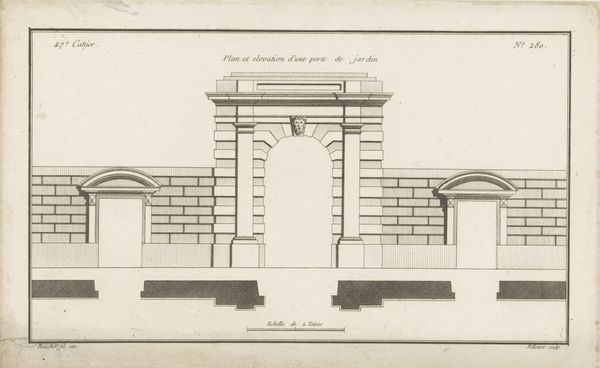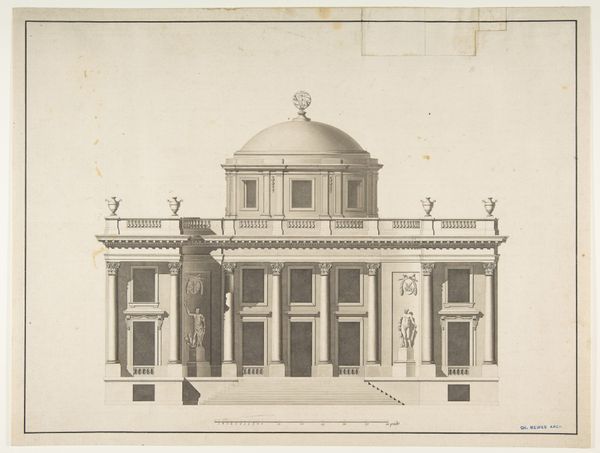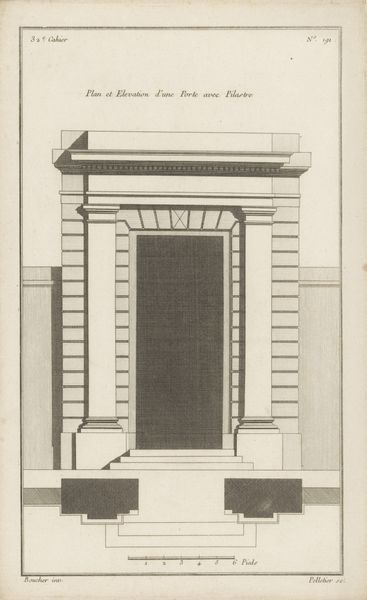
drawing, paper, engraving, architecture
#
drawing
#
neoclacissism
#
paper
#
geometric
#
line
#
engraving
#
architecture
Dimensions: height 203 mm, width 330 mm
Copyright: Rijks Museum: Open Domain
Jean Pelletier created this drawing of a gate with putti and a medallion. The dominant visual symbols here are the putti, the small winged children, and the medallion, which is a circular or oval decorative element. These symbols are deeply rooted in classical antiquity. The putto, derived from the classical Cupid or Eros, represents love, desire, and innocence. You'll often find them adorning Renaissance and Baroque art, signifying divine love or playful cherubic spirits. They appear in Botticelli’s "Birth of Venus" and Raphael’s many depictions of the Madonna. As time progressed, these symbols evolved, sometimes losing their religious significance. Now, the medallion is a classical motif, often used to display portraits of emperors or important figures. Over time, the medallion has shifted from a symbol of power to one of commemoration. Think about the emotional resonance these images had, how the collective memory of love and power are interwoven into the very fabric of these symbols. It is not just about what we see, but about the echoes of history that stir within us. These symbols have resurfaced, evolved, and taken on new meanings in different historical contexts, a testament to the cyclical nature of cultural memory.
Comments
No comments
Be the first to comment and join the conversation on the ultimate creative platform.
